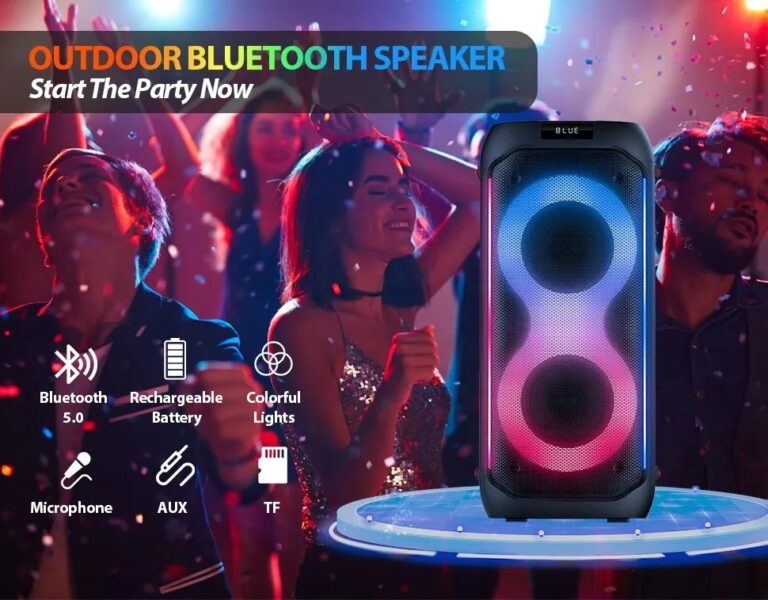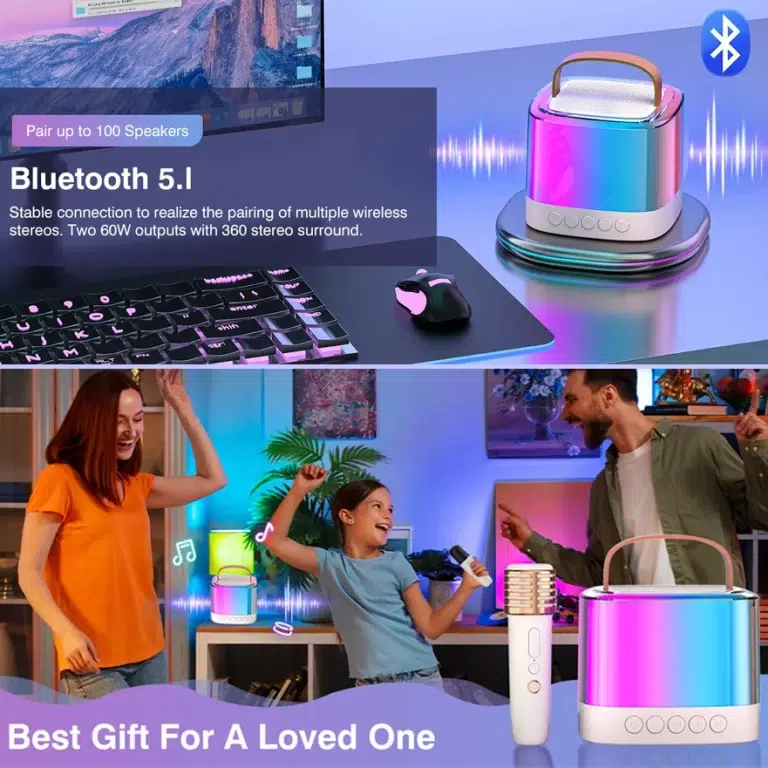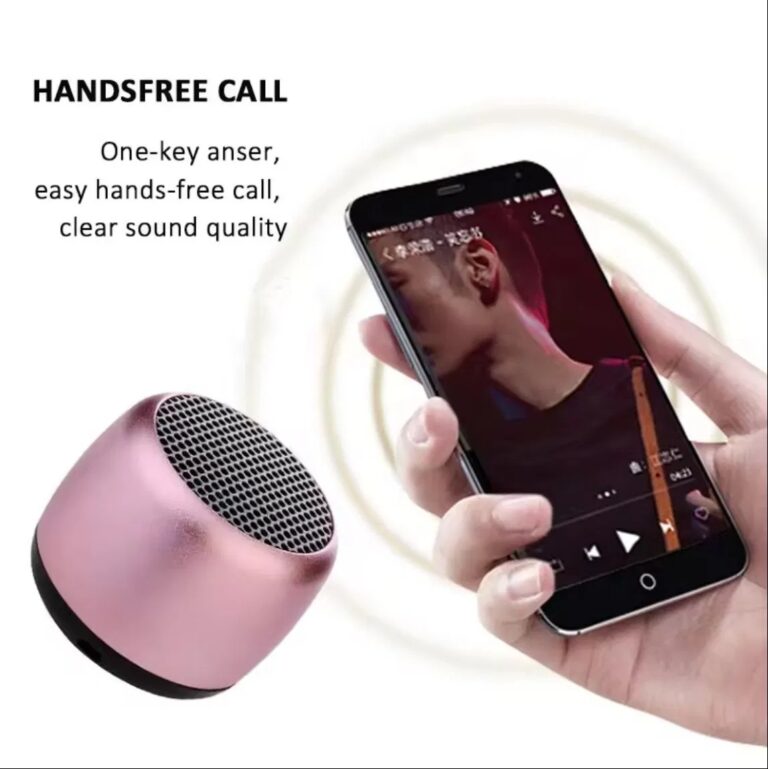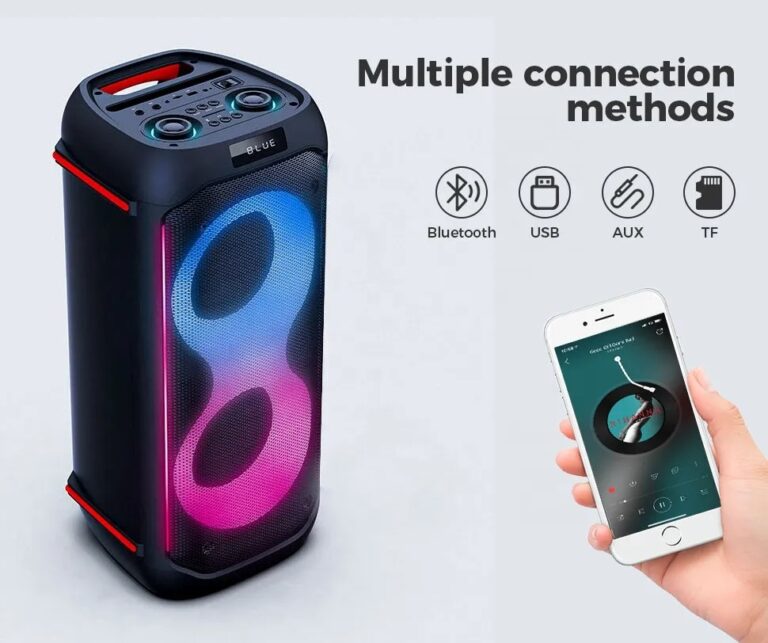Introduction
With the increasing development of transmission technology, wireless products have become the mainstream trend. And Bluetooth speakers are also one of the entertainment products that have caught up with this trend. Currently, Bluetooth speakers not only provide a certain level of sound quality enjoyment, but also support a wider connection range. There are currently many products on the market, such as JBL, SONY, Anker, B&O, BOSE, Marshall, Ultimate Ears, Xiaomi and others have launched various multifunctional and differently shaped Bluetooth speakers. How can one choose without making mistakes?
Common Factors to Consider When choosing bluetooth speakers
Is it necessary to use a Bluetooth speaker? Is it different from playing music on a mobile phone?
With smartphones becoming essential 3C devices for modern people, playing music and watching movies can be said to be done as one pleases. However, the performance, sound quality thickness, and even basic volume of the built-in speaker on a mobile phone have their limits, so it is necessary to choose a Bluetooth speaker designed specifically for playing music.
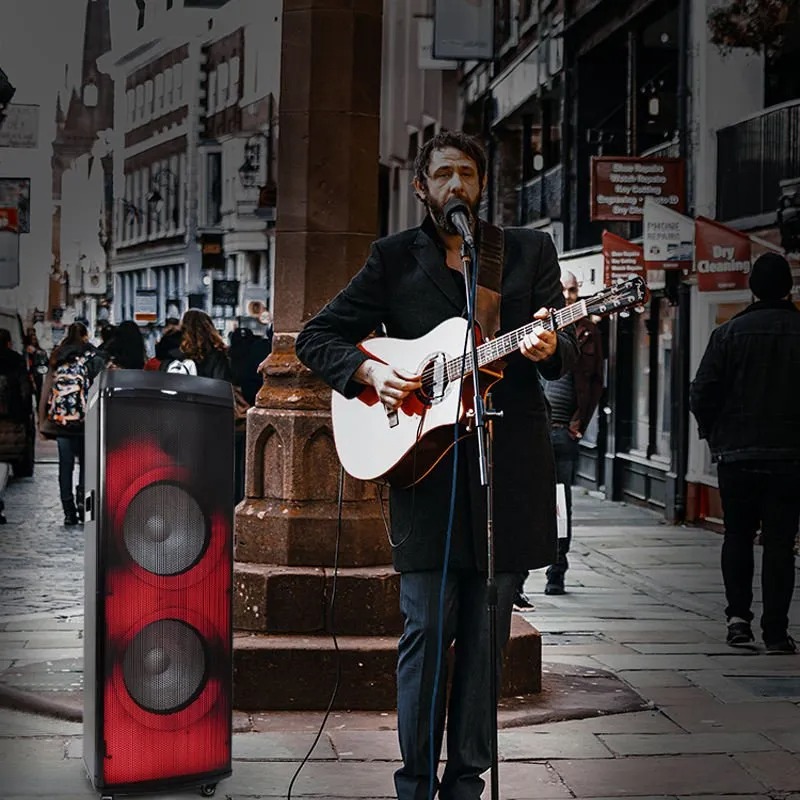
Bluetooth speakers can perfectly present details such as mid to low frequencies that mobile phones cannot handle delicately, and the texture and thickness of the sound can be said to be a world of difference. The necessary high volume can indeed reach every corner of the room, whether it is drying clothes or cooking rice, you can enjoy music without being affected. In addition, there are also many lightweight portable Bluetooth speakers on the market, which have significant breakthroughs in waterproof performance. You don’t have to worry about malfunctions when placed in the bathroom or kitchen.
Key points for purchasing Bluetooth speakers
Although most users first think of sound quality when choosing a Bluetooth speaker, there are many other small details that can be confirmed, such as durability, battery life, Bluetooth version, and other additional features. In order to purchase a product that meets your needs, please be sure to refer to the following purchasing points.
The sound quality is basically most related to the size
Although the sound quality of a speaker is affected by its components, it can still be simply judged by its size, which will be explained below.
For sound performance with a certain thickness, it is recommended to choose medium or larger sizes
The size of Bluetooth speakers ranges from palm sized to super large ones that require both hands to hold. Although there are many factors that affect sound quality, the larger the body, the larger the size that can accommodate parts. Therefore, judging sound quality solely based on size will not differ too much from reality.
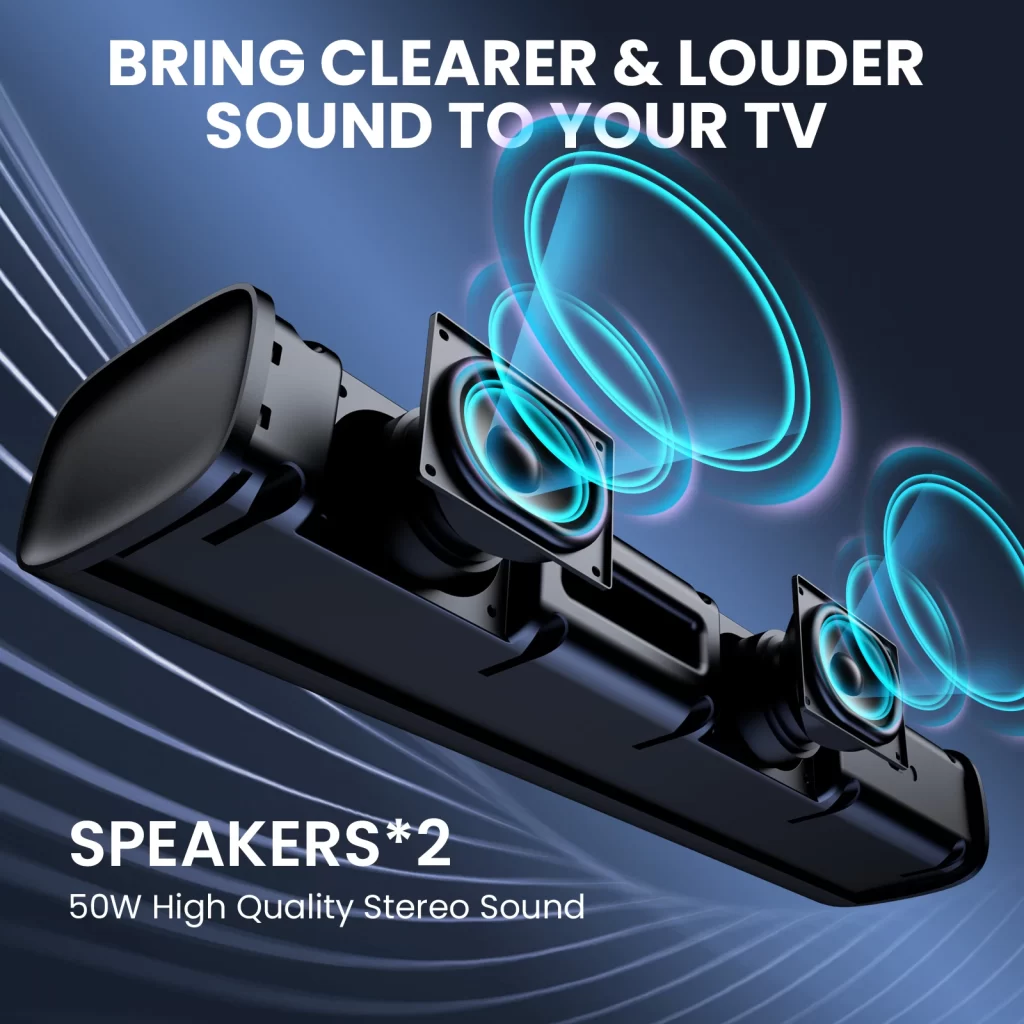
Generally speaking, models weighing between 300 and 700g, with one side larger than 18cm or more (approximately the size of a 550mL beverage bottle), can produce live concert level sound performance. However, models with palm size may have insufficient thickness and details. Meanwhile, the larger the size of the device, the louder the playback volume. If you want to truly experience the power of music outdoors, it is recommended to choose a model with a certain volume.
If connecting an Android phone, consider a speaker that can transmit high-resolution sound quality.
Smartphones and other devices transmit audio through Bluetooth waves, during which the audio needs to be compressed. This compressed device or program is called an audio codec. However, there is not only one specification for codecs. The specifications used by smartphones that send audio and speakers that receive audio must be consistent in order to achieve the best results of this type of encoding.
Encoder not only affects compression rate and sound quality, but also affects transmission delay. Although the characteristics of the audio system itself can also affect the sound quality, the encoder controls the quality of the audio source and is a prerequisite for ensuring good sound quality. Here is a brief introduction to the existing types of audio encoders:
SBC: It is a standard audio encoding technology for Bluetooth devices, which prioritizes compression rate and transmission speed (applicable to all smartphones and Bluetooth speakers).
AAC: The audio compression ratio is lower and the sound quality is better than SBC. Unique encoding technology for iPhone.
AptX: The sound quality and resolution are higher than AAC, and even comparable to CD sound quality, making it a widely used encoding technology for Android phones.
AptX HD: An upgraded version of aptX that supports up to 48kHz/24bit.
LDAC: The sound quality is better than aptX HD. The latest encoding technology developed for SONY supports high sound quality up to 96kHz/24bit, achieving lossless Bluetooth transmission. However, currently only SONY devices support this technology.
Currently, Android phones support all types of encoding, but iPhone phones only support SBC and AAC. Before making a purchase, besides checking the specifications of the phone or tablet you are holding, don’t forget to confirm whether the codec used in the speaker you want to purchase is consistent with the specifications of the phone or tablet. However, currently most Bluetooth speakers mainly support SBC, and there are few products that support AAC or higher formats. Therefore, the encoding part only needs to be confirmed when the speaker has multiple supports.
Passive radiators are optional
Many small and medium-sized Bluetooth speakers have a relatively narrow internal structure due to air vibration, which affects their low-frequency performance to some extent. However, in recent years, some manufacturers have launched products equipped with “passive radiators”, which are designed similar to the sound system’s dummy body, with the aim of making the low frequency range of small and medium-sized speakers richer and deeper, creating a bold bass experience. That being said, it is difficult for non professionals to perceive differences in actual listening experience, so there is no need to be too concerned about whether passive radiators are available when selecting.
Pay attention to the supported playback range: below 100Hz in the low range and above 30kHz in the high range are preferred
When purchasing speakers, it is common to see promotional texts such as “clear high and mid range” and “satisfying bass”, and the key to affecting the range performance lies in the components of the speaker itself. Be sure to confirm the Hertz (Hz) range that the speaker can support when making a purchase. If you want to experience the deep bass range, speakers that support the low bass range should be below 100Hz, while speakers that support the low bass range below 40Hz can provide richer and more perfect sound quality; In terms of high pitch range, supporting frequencies above 30kHz is already quite sufficient, and listening to regular music will no longer feel hazy.
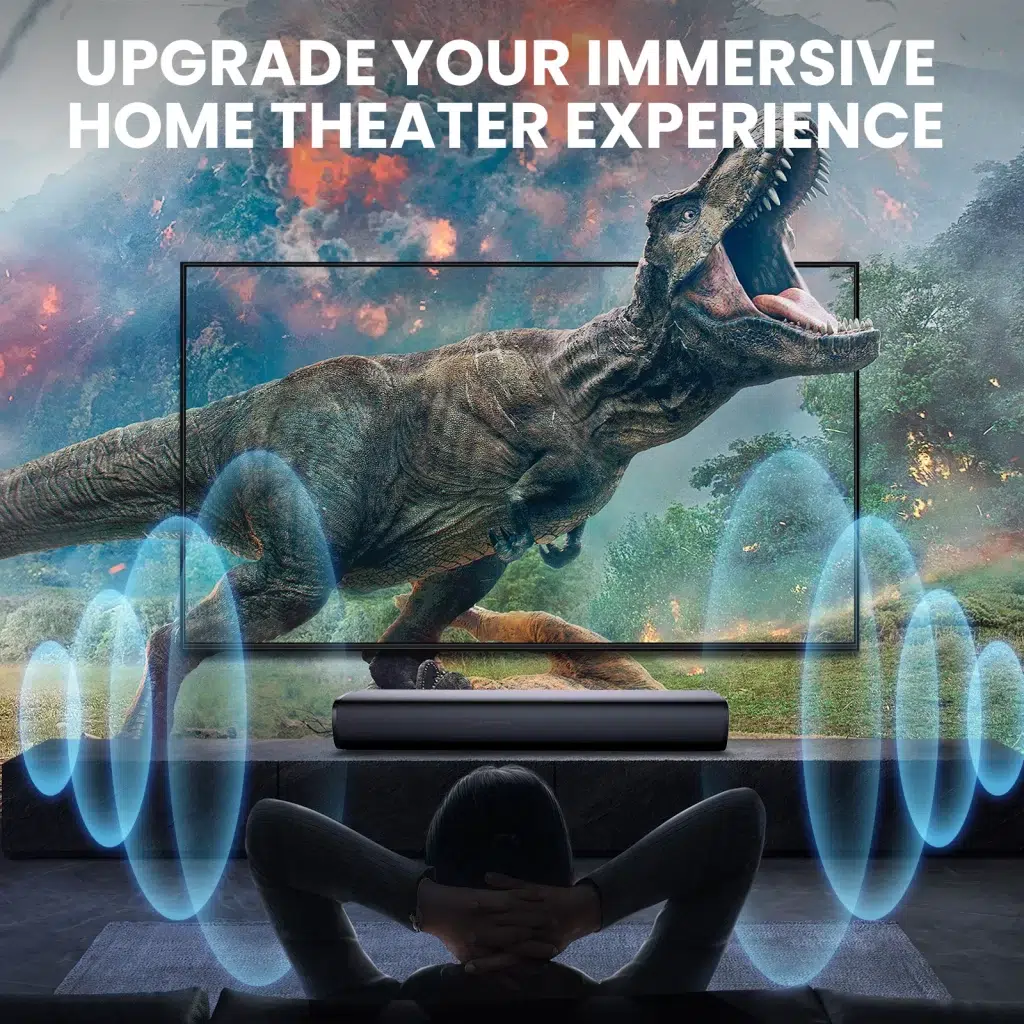
The W number affects the volume level, and outdoor use should be above 20W
The “W number” represents the power used for sound output. In principle, a Bluetooth speaker with a higher W number not only has a louder volume, but also a more pronounced bass, making it suitable for use in a wide space. Generally, products priced between 5 to 150000 RMB are sufficient for use in enclosed spaces of around 5 square meters. However, if they are used as background music for gatherings in spacious places such as living rooms or outdoors, it is recommended to choose styles priced at least 200000 RMB or higher.
In summary, the W number is a highly positively correlated indicator with volume and bass performance. When selecting a Bluetooth speaker, the size of the space used should be considered to determine the W number.
If you often carry it out, it is safer to have a continuous playback time of more than 15 hours
Almost all current Bluetooth speakers have built-in batteries, so many people also use Bluetooth speakers as entertainment devices for outdoor activities such as camping, barbecue parties, etc. If you pay more attention to “battery life” when purchasing, it can ensure uninterrupted music enjoyment.
And there are various styles of products on the market, ranging from those that can play continuously for 5 hours to those that can be charged 24 hours. Generally speaking, if used in places like homes where it can be charged at any time, the battery life of about 5 hours is also not a problem. However, if you want to use it outdoors or camping, it is recommended to choose a model that can play continuously for at least 15 hours.
Waterproof level IPX5 or above is required to ensure that it will not malfunction when wet
If you want to enjoy music while bathing or playing in the sand and water, you must pay attention to the dustproof and waterproof levels of the speaker. The international dustproof and waterproof rating is indicated by the “IP ○△” method, with the preceding number indicating dustproof and the following number indicating waterproof rating. For example, if labeled as “IPX5”, it represents waterproof level 5, while “IP56” represents dustproof level 5 and waterproof level 6. International standards can be used to determine which level of product needs to be used.
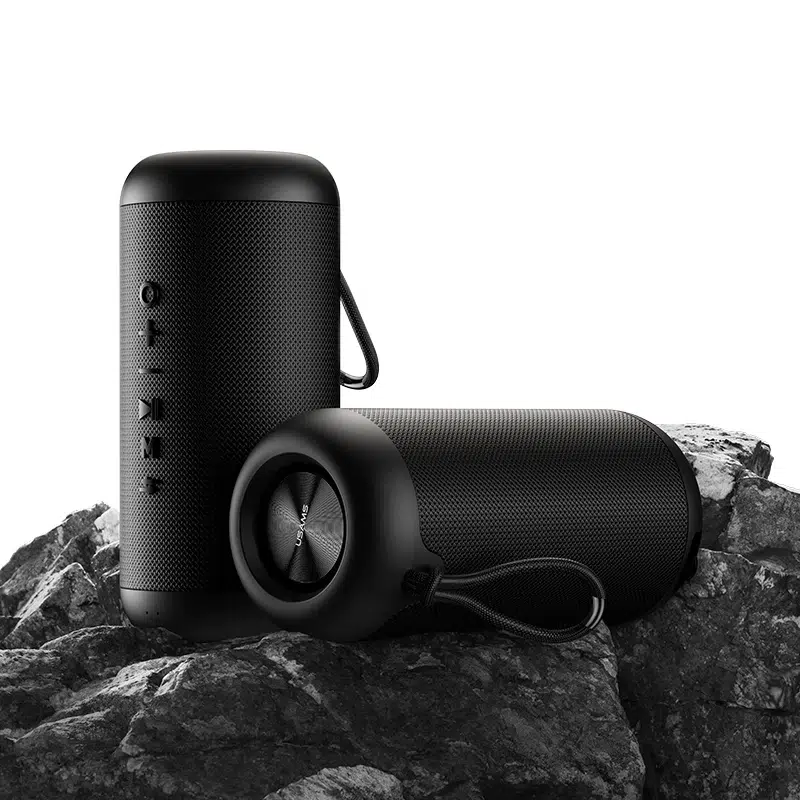
If there is light rain or a slight splash of water, choose the IPX4 style. For use in places with a high probability of exposure to water vapor such as swimming pools and beaches, it is recommended to choose IPX5 or higher. The IPX7 style can even last for 30 minutes at a depth of 1 meter underwater, and can safely escape from accidental falling into the water.
Confirm if there are any other features that make it more convenient to use
In addition to the basic function of listening to music, many Bluetooth speakers are also equipped with functions such as answering calls and NFC connection to increase convenience and practicality. The following will introduce several common additional functions.
NFC function: can instantly complete complicated pairing procedures
Common problems when choosing Bluetooth speakers
summary
After reading the selection points and popularity ranking list, I believe all the value friends have more specific ideas on how to choose. Due to differences in personal experience and auditory perception, such as sound quality and ease of use, it is a subjective feeling. It is recommended to choose based on the purpose and personal needs in order to enjoy beautiful music in every place.

